If Baiyang Qiu’s jewelry looks familiar, you may have seen it featured as an award winner. Two years into her career as an emerging designer, she took first place in the MJSA Vision Awards. She’s won several more awards since then, including the Couture Top 3 in Platinum last year.
In a crowded space, Baiyang’s designs are subtle but distinctive. Essentially, she does wire work, but not like you’ve seen before.
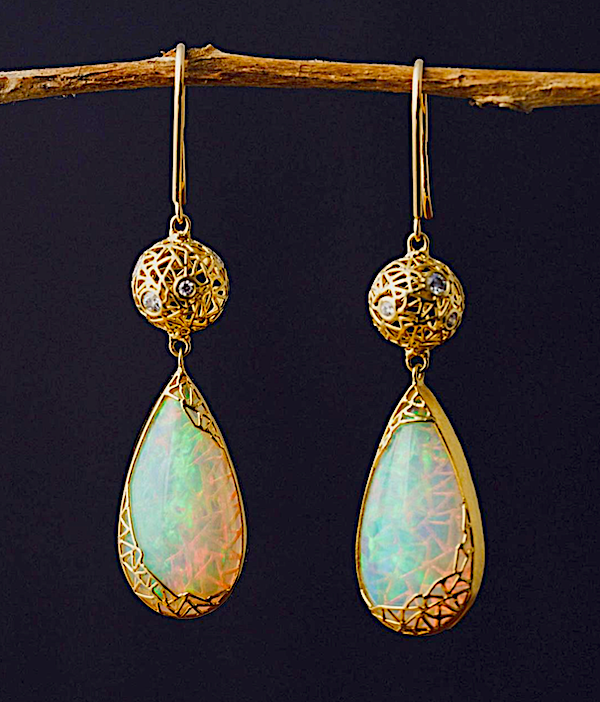
Look how clean the open work is in these earrings. She extended the open mesh work from behind so that you can see a hint of it through the opals. When the earrings move with the wearer, the movement lights up not only the rainbow fire in the opals, but also the flash of those diamond accents embedded in the tops.
Baiyang’s work is often complex, not always perfectly symmetrical, but always balanced, clean and finished. She relies on CAD/CAM, something she was trained to do in China, initially in industrial design, a field she worked in successfully for a few years before settling in the U.S.
When Baiyang enrolled in the MFA program at the Savannah College of Art and Design, she had no metalsmithing skills and had never made a piece of jewelry in her life.
“In China, you got $5 a day to work at hand craft in a shop,” she says. “It’s not something you went to college to learn!”
Especially when she was coming of age, handcraft in China was learned in an apprenticeship. “When I applied for college almost 20 years ago, there was no major in jewelry making.”
But from her first courses in hollow construction, wire work, and basic stone stetting, she found she loved working with her hands. After she mastered the basics, she began to develop her own approach.
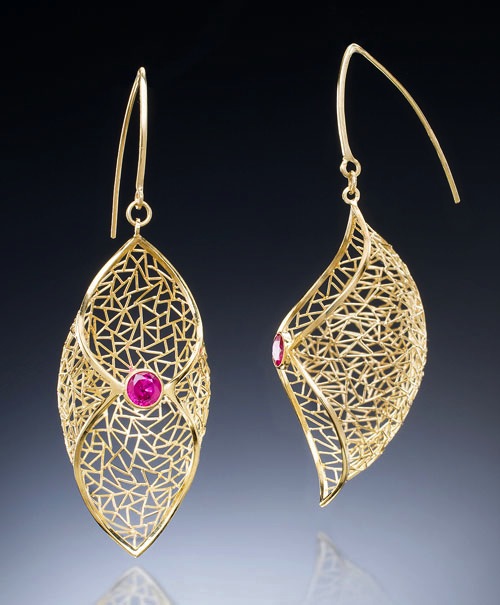
Eager to launch her career as a designer, she had the bad luck to graduate in 2009 – peak of the recession – and had to find a more profitable venture for a while. This breather stretched into three years, giving her an unexpected opportunity to contemplate her path forward.
When she finally returned to jewelry, she had a clear vision of the kind of design she wanted to do and the business she wanted to run.
She had also saved up for a laser welder. This is why you never see solder in her work, even the earliest pieces.
“When you solder two pieces of metal, the solder is like a glue binding two metals together. But the solder itself, the joint, does not have the same strength as the rest of the metal. It’s a completely different material,” she explains.
“In my work, for the joints in fine gold wire, I use a laser welder. There is basically no solder involved for the wire part. It’s two pieces fused together, no other metal, so the joint is much stronger.”
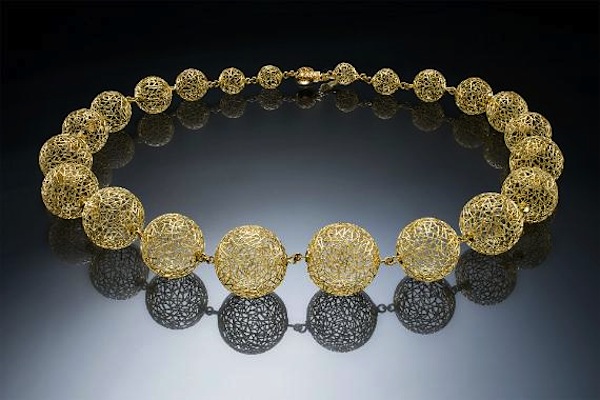
Laser welding allows her to work with much thinner wire – often 28 or 29 gauge – to mimic the fine lines of a leaf or flower. “My pieces have a very delicate, fragile look but the actual pieces are wearable and strong.”
That suits her design inspiration, which is about capturing the fragile, temporary beauty of nature. A pair of earrings was inspired by dew-covered petals found in the garden.
“Each one had a small drop of dew, such a beautiful thing to see, so temporary – the flower petal could be broken, the dew could be gone any minute. I wanted to capture the delicate feeling of it.”
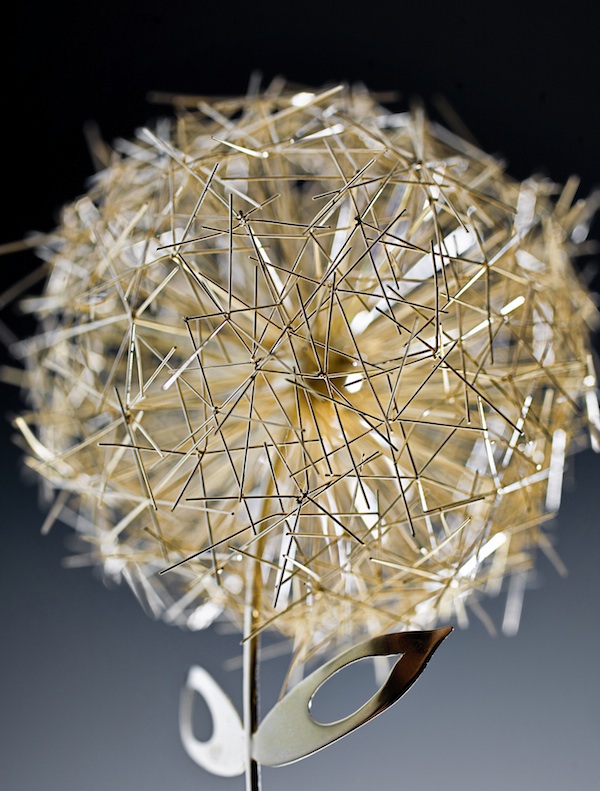
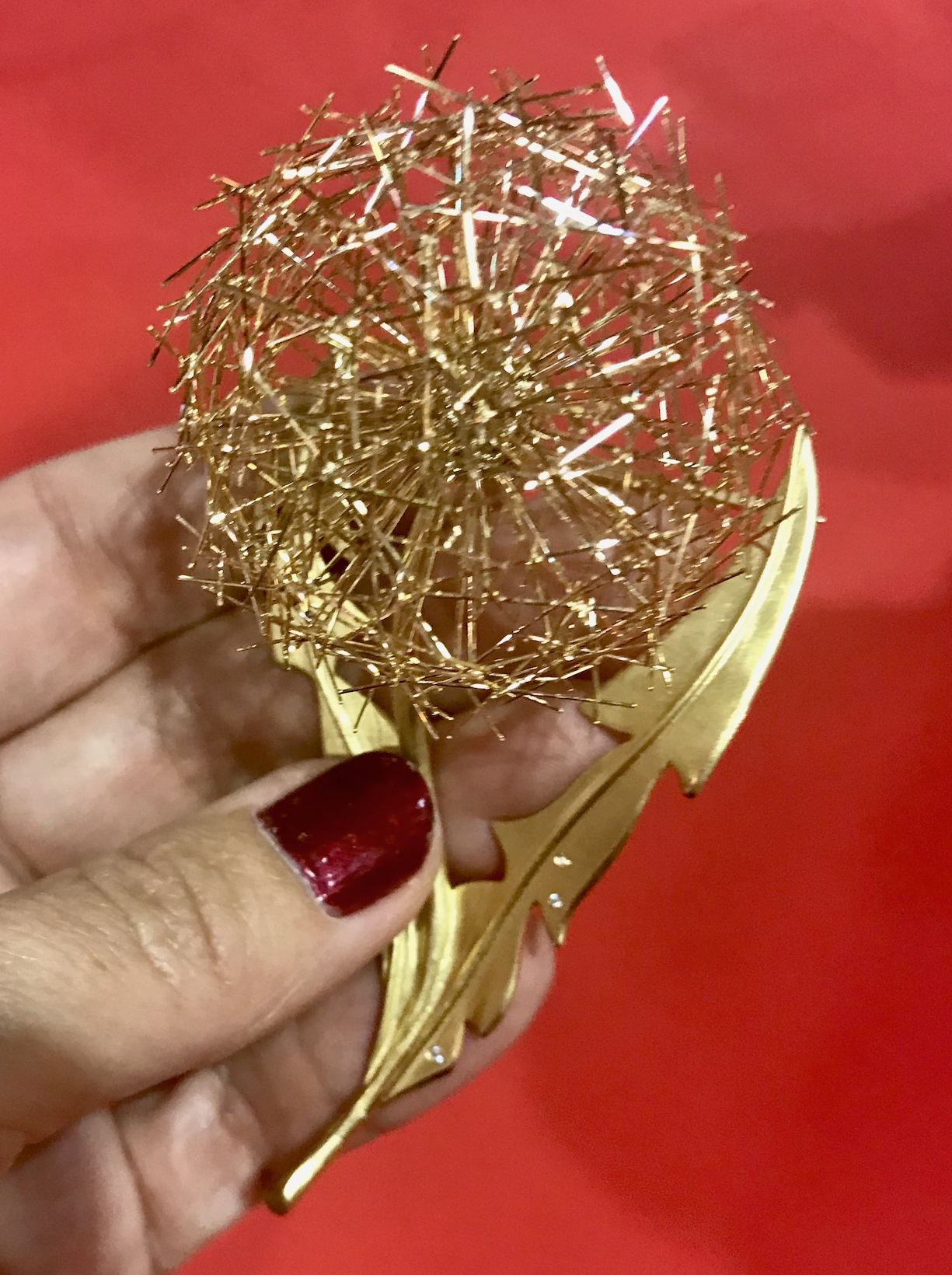
Another collection was based on dandelions. “I loved to play with dandelions as a child,” she says. “I tired to pick them and keep them in my bedroom, but they were always gone in a day. I dreamed of having one I could hold in my hand and keep forever.
“So I started piecing the thin-gauge wire to create that feeling of delicacy. Then I fabricated it carefully, so it would be strong enough to be worn,” she says. Forging wire has proven a perfect way to capture nature’s transitory beauty, but it’s not necessarily her life’s work.
“The reason I choose to do wire now is because it fits the design,” she says. “If a design requires different fabrications, different elements, I’ll use those. For me, the design always comes first.”
Find Baiyang Qiu at baiyangjewelry.com.
Want to see more posts like this?
Related products

